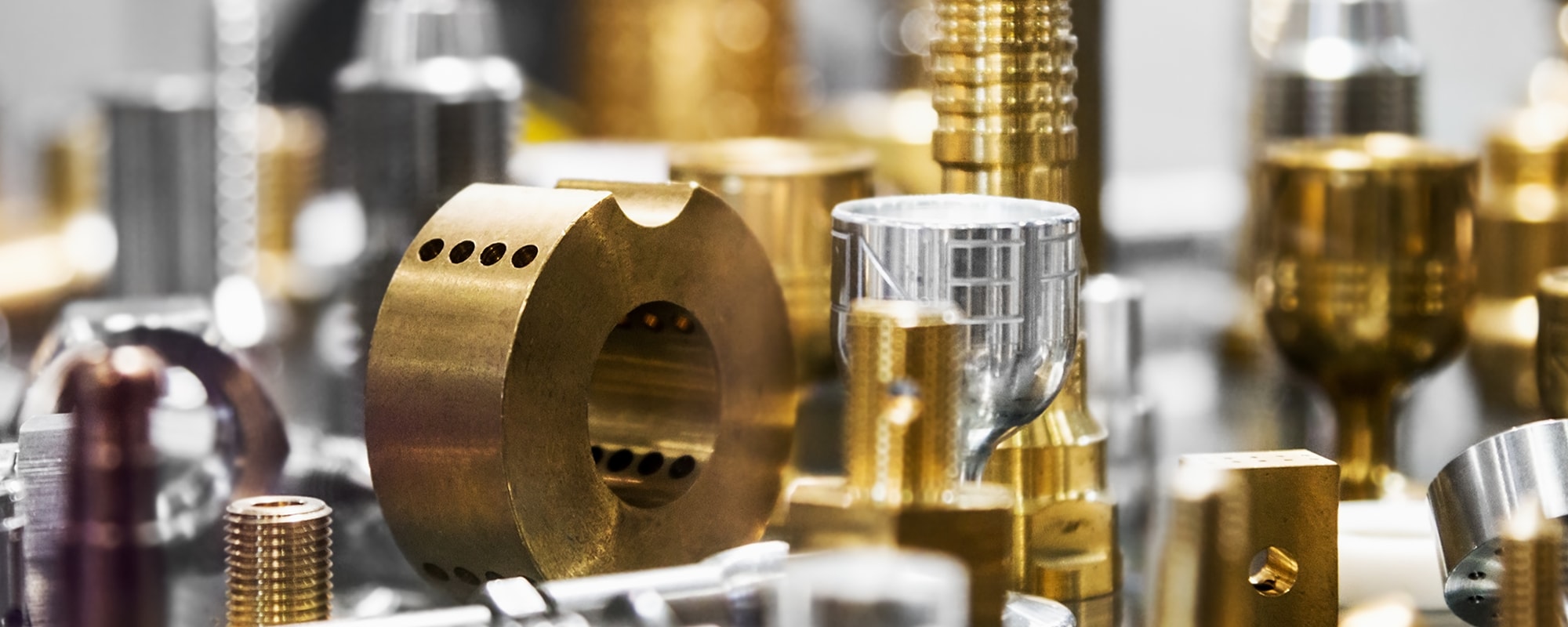
Dramatically reducing dealer-to-delivery friction
Sometimes even a manufacturer of well-oiled machines can find itself in need of back-end transformation.
DID IT REALLY TAKE
65 MANUAL TOUCHES
TO COURSE-CORRECT
SOME ORDERS? (YES.)

The Situation
There’s an engineering rule of thumb that moving parts affect wear and efficiency: more moving parts means more friction, and more friction means less efficiency (not to mention quicker time to break down).
It’s a principle well familiar to one global heavy industrial manufacturer. Its business had grown for decades on the strength of the durable—and increasingly specialized—machinery that it produced. But this success had its flip side: The company’s expanding product lines and multiple mergers and acquisitions had, unavoidably, added a significant burden of administrative moving parts.
Some of these new moving parts were necessary and to be expected at an increasingly complex and globally distributed business. But others weren’t; they were a byproduct of a back office that hadn’t kept pace with industry and technological advances.
One particularly severe source of unnecessary friction: the company’s order management system—the crucial process by which customers select products and ultimately have them delivered.
An already complex order life cycle—customer works with a dealer to configure a machine to suit them, component parts of the order get routed to appropriate manufacturing facilities, finished components are then sent to different facilities for assembly, final product is shipped to customer—had become uncomfortably, improbably inefficient (and too often broke down).
Dealers were configuring machine orders by flipping through PDF catalogs, entering the information into Excel worksheets, then manually entering that data into their local enterprise resource planning (ERP) systems for transfer to the factory ordering system. But manual data entry is error-prone, the catalogs were often outdated (leading to further errors, like incorrect part numbers or prices), different dealers used different ERP systems (hundreds of dealers, dozens of ERP systems), and the factory ordering system still ran on 1970s-era technology. Dedicated account coordinators course-corrected along the chain as needed—in some cases, making as many as 65 manual interventions to complete a successful customer delivery.
Too many moving parts, too much friction. Not sustainable. The company called Deloitte for help.
THE SOLVE
The Deloitte team approached the company’s sprawling order management challenges much as the company had grown itself into a global brand—by being clear on the task to be done, designing the complex set of specialized moving parts needed to complete that task, breaking those parts down into modular components, optimizing each, then assembling them for maximum power and efficiency.
Only, in this case, the moving parts were digital, and the completed product would be an enterprise tech stack: the modern order management system.
This system’s task was to consolidate commercial orders from dealers and enhance order efficiency and accuracy by automating recurring, manual steps (thus streamlining both order management and manufacturing processes). The combined Deloitte/company team set to work.
First came the design phase, based on a modular, event-driven architecture (a pattern used in IT systems where the flow of the program is determined by the activities taking place). The technical backbone of the system—handling order processing, financials, and material movements—would be built on SAP ERP, with various integrations, both on-premises and cloud-based, along the chain.
With this design, dealers would place orders through a cloud-based SAP Commerce application that provides real-time updates and other features, like self-service configuration management, delivery tracking, and compatible pricing—no more manual price list checks. Those orders would then be processed and scheduled through a Salesforce application (also cloud-based) that provides visibility into downstream manufacturing and delivery stages—a new interface that significantly reduces errors and enhances efficiency.
From there, the orders would pass to an Amazon Web Services (AWS) platform, where the data is harmonized, then routed to the appropriate back-end ERP system for manufacturing and delivery. Further data consolidation—and, crucially, reporting capabilities—is provided through integration with tools like Snowflake.
This hybrid approach—front-end and middle layers cloud-based, backbone and architecture on-premises—can help ensure a smooth interaction between different components of the order management process.
After design came implementation—no small feat. This involved transitioning the company from the dozens of legacy ERP systems across its many, far-flung factories to a unified SAP ERP Central Component (ECC) system. (Adding to an already complex conversion lift: early-stage automation and machine learning integrations, and the tailored mix of on-premises and cloud applications.)
Given the scale of the engagement, full global implementation is slated to be delivered in five waves over five years, encompassing an order volume in the tens of billions of dollars. The first wave (migrating orders for one US and one overseas factory) has been successfully completed, with the second wave (migrating orders for five additional factories, all overseas) underway.
The company’s new commerce machine, in other words, is coming together—and is, in fact, already hard at work.
CLOUD +
ON-PREM DESIGN =
SEAMLESS
COMPONENT
INTERACTIONS
The Impact
Because two years into the company’s five-year timeline, the Modern Order Management system design and implementation are already showing concrete, measurable results.
The markedly improved dealer experience has been reflected by swift adoption in the field, earning it a reputation as the most innovative initiative in the company. There are dollar metrics as well: The new platform is now the primary source of order revenue, with an impressive 200% annual growth rate.
The company’s dealers are also enjoying a significant reduction in the time it takes to create a product configuration with greater accuracy—cut from over half an hour to less than two minutes, with a 98% reduction in manual errors.
But the new system hasn’t just optimized operations—it’s bolstered the company’s market position and revenue streams, responsible, since its inception, for generating $11 billion in revenue, with nearly a third of the company’s global orders flowing through the system in 2023 alone, contributing to a remarkable 104% year-over-year growth.
And things are just getting started. One feature of the new system—the Single Order Consolidation Invoice (SOCI)—enables the merge, in transit, of both machines and components. This has already reduced transport and inventory costs by millions of dollars and provided other incremental business value like increasing fulfillment transparency for dealers.
The modular, event-based architecture is designed to adapt to changing business needs; additional machine learning and automation are being considered to further improve data consolidation and reporting; a back-end upgrade to SAP S/4HANA could further improve efficiency.
Fewer moving parts, less friction, better results. As the digital aspects of the company catch up to the industrial, the future is well under construction.
Insert Custom HTML fragment. Do not delete! This box/component contains code
that is needed on this page. This message will not be visible when page is
activated.
+++ DO NOT USE THIS FRAGMENT WITHOUT EXPLICIT APPROVAL FROM THE CREATIVE
STUDIO DEVELOPMENT TEAM +++
- Chapters
- descriptions off, selected
- subtitles off, selected
- captions settings, opens captions settings dialog
- captions off, selected
This is a modal window.
The Video Cloud resource was not found.
This is a modal window. This modal can be closed by pressing the Escape key or activating the close button.
LET'S CONNECT.
Do these challenges sound familiar?
${foot-notes}
${foot-notes}
-
Doug Gish
Principal
Deloitte Consulting LLP
dgish@deloitte.com
+1 816 802 7270 -
Piyush Gandhi
Senior Manager
Deloitte Consulting LLP
pigandhi@deloitte.com
+1 571 766 7682 -
Niladri Gupta
Senior Manager
Deloitte Consulting LLP
nilgupta@deloitte.com
+1 312 486 5917 -
Alekkatt Madhusoodanan
Senior Manager
Deloitte Consulting LLP
amadhusoodanan@deloitte.com
+1 215 446 4376 -
${tile-5-title}
${tile-5-info}
-
${tile-6-title}
${tile-6-info}
Insert Custom HTML fragment. Do not delete! This box/component contains code
that is needed on this page. This message will not be visible when page is
activated.
+++ DO NOT USE THIS FRAGMENT WITHOUT EXPLICIT APPROVAL FROM THE CREATIVE
STUDIO DEVELOPMENT TEAM +++
Custom Sticky Header